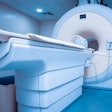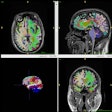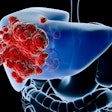The use of audiovisual distraction (AVD) -- for example, screening a movie -- with children undergoing MRI reduces the use of sedation, according to a study published August 6 in Pediatric Radiology.
The findings are good news for pediatric patients, who often struggle to remain still during an MRI exam, according to a group led by Juan Boriosi, MD, of the University of Wisconsin-Madison.
"Our study may provide a more accurate estimate of the impact of AVD technology in decreasing MRI sedation in children," the team noted.
Children under the age of 8 often require sedation or general anesthesia for MR imaging, but since both of these carry risks, experts have sought to develop strategies to minimize sedation, including decorating the suite with age-appropriate themes; using a mock MRI scanner to familiarize the child with the equipment; and noise-reduction strategies. Another technique is AVD technology, which can screen a movie in the MRI bore.
Boriosi and colleagues hypothesized that AVD technology could reduce the use of minimal or moderate sedation in children between the ages of 4 and 18 while also adhering to diagnostic quality and allotted exam time standards. The initiative (called "awake MRI") was conducted at a pediatric sedation clinic between October 2021 and January 2024, and it included 320 children, all of whom were scheduled for an MRI and were eligible for either minimal/moderate sedation or AVD technology.
The technology consisted of a video projector located outside the MRI bore that projected a movie into the bore's upper inner surface. This initial projector was suitable only for head-first positioning in the scanner, but a few years later, the hospital installed a new in-bore video system that could accommodate both head-first and feet-first body positions.
The initiative resulted in an average monthly decrease in minimal/moderate sedation use of 28.8 percentage points, and an overall reduction in sedation use of 13%, the group reported. It also noted the following:
- Of the total study cohort, 228 (71.3%) received minimal/moderate sedation (mean age, 9.7) and 92 (28.8%) underwent AVD (mean age, 10).
- The average number of children considered eligible for AVD increased from 3.8 to seven patients per month.
- Of the 92 MRI referrals triaged to AVD, all patients completed the exam successfully without sedation, all studies were diagnostic, and 96% of studies were accomplished within the allotted exam time.
Another benefit of AVD technology? Patient and caregiver satisfaction, according to the authors, who found that patients were highly satisfied in 69% of follow-up surveys and caregivers in 78%.
The complete study can be found here.


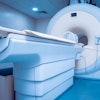

.fFmgij6Hin.png?auto=compress%2Cformat&fit=crop&h=100&q=70&w=100)


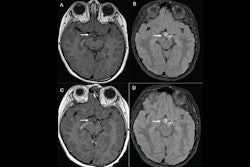

.fFmgij6Hin.png?auto=compress%2Cformat&fit=crop&h=167&q=70&w=250)
